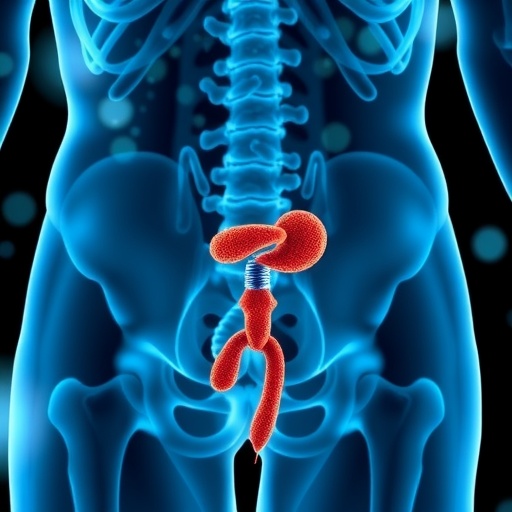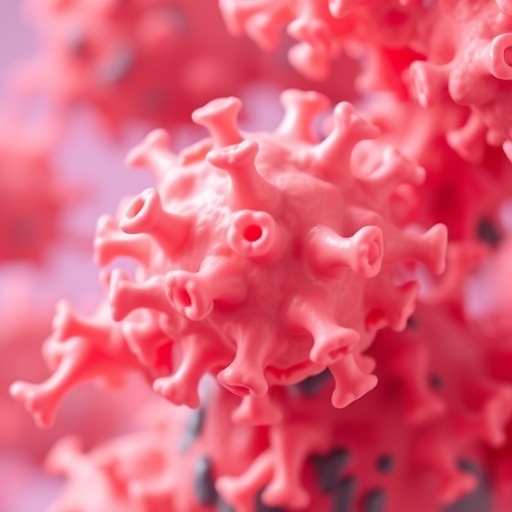
In the ever-evolving landscape of environmental health sciences, concerns surrounding early-life exposure to synthetic chemicals have surged to the forefront of research priorities. A groundbreaking new study has now shed crucial light on how two ubiquitous groups of industrial chemicals—phthalates and bisphenols—impact childhood allergic conditions. By pooling data from multiple cohort studies, researchers have unravelled complex interactions between these environmental contaminants and the developing immune system, revealing potential pathways that may exacerbate allergic disease outcomes in children.
Phthalates and bisphenols, widely used as plasticizers and components in numerous consumer products, have pervaded modern life for decades. These substances are found in everything from food packaging and household goods to personal care items and medical devices. Their pervasive presence translates into continuous exposure, particularly concerning during prenatal and early postnatal life stages when physiological systems are most vulnerable. Notably, the study highlights how these chemicals can disrupt immune development, potentially predisposing children to allergic diseases such as asthma, eczema, and rhinitis.
This investigation pooled data from extensive population-based cohorts, providing a robust sample size and increasing the power to detect subtle but meaningful associations. The integrative analysis accounted for variations in exposure levels, demographic factors, and confounders, enabling a sophisticated evaluation of how cumulative and individual chemical exposures correlate with allergic outcomes in childhood. These findings offer unprecedented insight, bolstering the argument for revisiting regulatory thresholds and advocating for stricter controls on these compounds.
.adsslot_xdZX8A6Wpg{width:728px !important;height:90px !important;}
@media(max-width:1199px){ .adsslot_xdZX8A6Wpg{width:468px !important;height:60px !important;}
}
@media(max-width:767px){ .adsslot_xdZX8A6Wpg{width:320px !important;height:50px !important;}
}
ADVERTISEMENT
Crucially, phthalates and bisphenols are known endocrine disruptors, meaning they interfere with hormone systems that orchestrate growth, metabolism, and immune function. The current study advances this knowledge by illustrating that exposures during critical windows of immune ontogeny can modulate cytokine profiles and skew immune responses toward allergic phenotypes. Elevated markers of inflammation were consistently observed in children with higher early-life exposures, indicating that these contaminants may prime the immune system toward hypersensitivity rather than tolerance.
Mechanistically, the researchers propose that these chemicals may influence genomic and epigenomic programming within immune cells. Alterations in gene expression patterns critical for maintaining immune homeostasis could underlie the heightened risk of allergy development. Epigenetic modifications triggered by exposure to phthalates and bisphenols during fetal and infant stages might set the stage for lifelong susceptibility, echoing the principles of the Developmental Origins of Health and Disease (DOHaD) hypothesis.
Moreover, the study carefully distinguishes between different phthalate and bisphenol congeners, underscoring that not all chemical variants exert equal biological impacts. For instance, certain bisphenol analogues displayed stronger associations with asthma prevalence, while specific phthalate metabolites correlated more significantly with atopic dermatitis incidence. This differentiation is pivotal for guiding future risk assessments and tailoring public health interventions targeting the most harmful compounds.
The pooled analysis also underscores the compounded effects of chemical mixtures, a realistic exposure scenario in modern environments. Unlike traditional toxicology that often tests single chemicals, this research acknowledges that simultaneous exposures can lead to additive or even synergistic effects on immune dysfunction. Understanding these interactions is paramount for comprehensive risk evaluation and for crafting policies that reflect real-world complexities rather than isolated chemical risks.
Importantly, the research further explores sociodemographic modifiers such as socioeconomic status, ethnicity, and urban versus rural residency. These factors influence both exposure levels and susceptibility, hinting at environmental justice considerations. Children in disadvantaged communities may bear disproportionate burdens of chemical exposure and allergic diseases, illuminating critical intersections between environmental health and social determinants.
From a public health perspective, these findings have broad implications. Allergic diseases in childhood are on the rise globally and represent a significant healthcare burden. The elucidation of environmental contributions to this trend offers new avenues for prevention. By minimizing phthalate and bisphenol exposure during pregnancy and infancy, it may be possible to reduce the incidence and severity of allergic conditions, a prospect with profound implications for lifelong health trajectories.
While the study sets a new benchmark in environmental epidemiology, it also highlights gaps warranting further investigation. The temporal dynamics of exposure and the reversibility of immune alterations remain open questions. Longitudinal follow-ups are essential to map the progression from early-life exposure to clinical allergic manifestations and to assess whether interventions could mitigate adverse outcomes.
Additionally, this research advocates for enhanced biomonitoring programs employing advanced analytical chemistry techniques to accurately quantify individual exposure profiles. Such improvements will sharpen our understanding of exposure-response relationships and facilitate personalized risk mitigation strategies. It also calls on the scientific community to develop safer chemical alternatives, encouraging innovation in materials science and industrial chemistry towards non-toxic substitutes.
The societal impact of these findings cannot be underestimated. Heightened awareness among healthcare providers, caregivers, and policymakers about the subtleties of chemical exposure and childhood allergy risk is crucial. Educational campaigns could empower families to make informed choices regarding product use, while policy reforms might prioritize the phasing out of the most deleterious phthalate and bisphenol types.
Intriguingly, this pooled cohort study exemplifies the power of collaboration and data sharing in tackling complex environmental health questions. By harmonizing diverse datasets across geographic regions and populations, researchers have achieved insights unattainable by single studies. This multidisciplinary approach strengthens the evidence base for regulatory agencies and supports the design of future trials and observational studies.
The study also advances the dialogue surrounding the exposome concept—the totality of environmental exposures throughout a human lifetime. Recognizing how early-life chemical exposures set the foundation for allergic disease risk contributes to a more integrative model of health determinants, bridging environmental science, immunology, and clinical medicine.
Scientifically, the evidence underscores the urgency of integrating environmental risk assessments into pediatric healthcare frameworks. Routine screening for chemical exposures and early signs of immune dysregulation could transform preventive pediatric medicine, allowing timely interventions before irreversible allergic sensitization occurs. Fostering such integrative care models aligns with precision medicine goals and holistic wellbeing.
In conclusion, this landmark pooled analysis delivers compelling evidence that early-life exposure to phthalates and bisphenols critically shapes childhood immune health, predisposing to allergic conditions through intricate biological mechanisms. As the chemical landscape continues to evolve, so must our strategies to safeguard vulnerable populations. This research serves as both a clarion call and a roadmap for science, policy, and society to mitigate the hidden toll of environmental chemicals on the next generation’s health.
Subject of Research: Early-life exposure to phthalates and bisphenols and their association with childhood allergic conditions.
Article Title: Phthalates and bisphenols early-life exposure, and childhood allergic conditions: a pooled analysis of cohort studies.
Article References:
Boissiere-O’Neill, T., Lazarevic, N., Sly, P.D. et al. Phthalates and bisphenols early-life exposure, and childhood allergic conditions: a pooled analysis of cohort studies. J Expo Sci Environ Epidemiol (2025). https://doi.org/10.1038/s41370-025-00790-2
Image Credits: AI Generated
DOI: https://doi.org/10.1038/s41370-025-00790-2
Tags: allergic diseases in childrenbisphenols and immune developmentchemical exposure during pregnancychildhood eczema and environmental factorscohort studies on phthalatesearly-life chemical exposureenvironmental health researchimmune system disruption and allergiesphthalates and childhood allergiesplasticizers and health risksprenatal exposure to bisphenolssynthetic chemicals and asthma





